89 F. maximum temperature yesterday in the Twin Cities.
84 F. average high on July 21.
93 F. high on July 21, 2016.
July 21, 2002:
Dew points reach 84 degrees at Madison, Morris, and Olivia. This ties
the all time highest dew point reading in Minnesota, as recorded by the
State Climatology Office.
July 21, 1934: Extreme heat hits western Minnesota, and the temperature topped out at 113 at Milan.
 Weather Shocker: More Showers and T-storms Today
Weather Shocker: More Showers and T-storms Today
This summer, when in doubt, just predict puddles. There's a 7 in 10 chance you'll be right.
Severe to extreme drought is gripping much of the Dakotas, but soil moisture across most of Minnesota is in fairly good shape.
During
the summer months weather systems slow down; light jet stream steering
winds aloft can cause frontal boundaries to stall. That's what happened
Wednesday night, with 4-7 inches of rain southeast of the MSP metro. It
was another case of "training storms"; T-storms redeveloping over the
same counties, much like train cars passing over the same section of
track.
A similar set-up today may result in spotty flash flooding
and even a few severe T-storms. Saturday looks lake-worthy with mid-80s,
but comfortable 70s return Sunday & Monday. The very worst of the
heat stays south of Minnesota into August.
WCCO Radio, The Big 830
is legendary, a Minnesota institution. People have been trying to have
me institutionalized for some time. It may just be a good fit.
I'll
be continuing my Conservation Minnesota blogging duties and joining
Jordana Green from 3-6 pm every Monday thru Friday on the radio dial.
Dangerous Heat Surging East.
NOAA has issued an Excessive Heat Warning for much of the central USA,
including Wichita, Kansas City, St. Louis, Peoria, Des Moines and Omaha
for a potentially dangerous combination of temperature and humidity.
Heat Advisories are in effect from the Great Plains to Raleigh and
Washington D.C., but Heat Warnings are now in effect for Philadelphia
and New York City. Flood watches are posted from southeastern Minnesota
and much of Wisconsin into northern Illinois, another elevated flood
risk for Utah and western Colorado. Map: Aeris AMP.
Tracking Wednesday's Derecho.
AerisWeather AMP has a radar loop from 7 am Wednesday to 1 am Thursday;
showing the long-lasting damaging wind event stretching from eastern
South Dakota across southern Minnesota into the Chicago area. My thanks
to meteorologist D.J. Kayser for teeing this up.
"Training Thunderstorms" Wednesday Night.
East-west frontal boundaries that stall in mid-summer can often become a
focal point for flash flooding, as waves of thunderstorms blossom and
dissipate, new ones taking their place. Before you know it you have 4-7"
of rain, which was the case along the Mississippi River Wednesday night
- heaviest amounts in southwest Wisconsin.
Several Hundred Homes Evacuated in Arcadia, Wisconsin. A nearby stream overflowed its banks and people had to be evacuated, according to
U.S. News.
Moderate Flash Flood Risk Rochester to Madison, Rockford and Chicago Today.
NOAA models suggest another "training storm" episode shaping up, a
conga-line of storms rippling along a nearly stationary frontal
boundary. The result may be some 3-6" rains in a short period of time,
capable of serious urban and river flooding.
84-Hour Rainfall Outlook.
NOAA's 12 KM NAM model prints out some 2"+ rains from the Twin Cities to
Milwaukee (best chance today into early Saturday), but bands of
flooding storms may push into upstate New York and Pennsylvania by late
weekend. Source: Tropicaltidbits.com.
Friday Severe Storm Threat.
NOAA SPC shows a slight risk from the Northern Plains and Upper
Mississippi Valley into the Midwest and Lower Great Lakes. The primary
risk is hail (and straight-line wind damage; even a slight risk of
another derecho).
What a Choice: Sauna-Like Heat or Severe Storms?
Models spin up the strongest storms from the Dakota and Minnesota into
the Great Lakes and New England over the next 48+ hours, along the
leading edge of slightly cooler, drier, more tolerable Canadian air.
Much of the rest of America will fry in the 90s, with a heat index of
100-110F from Washington D.C. to Dallas. Future Radar: NOAA and
Tropicaltidbits.com.
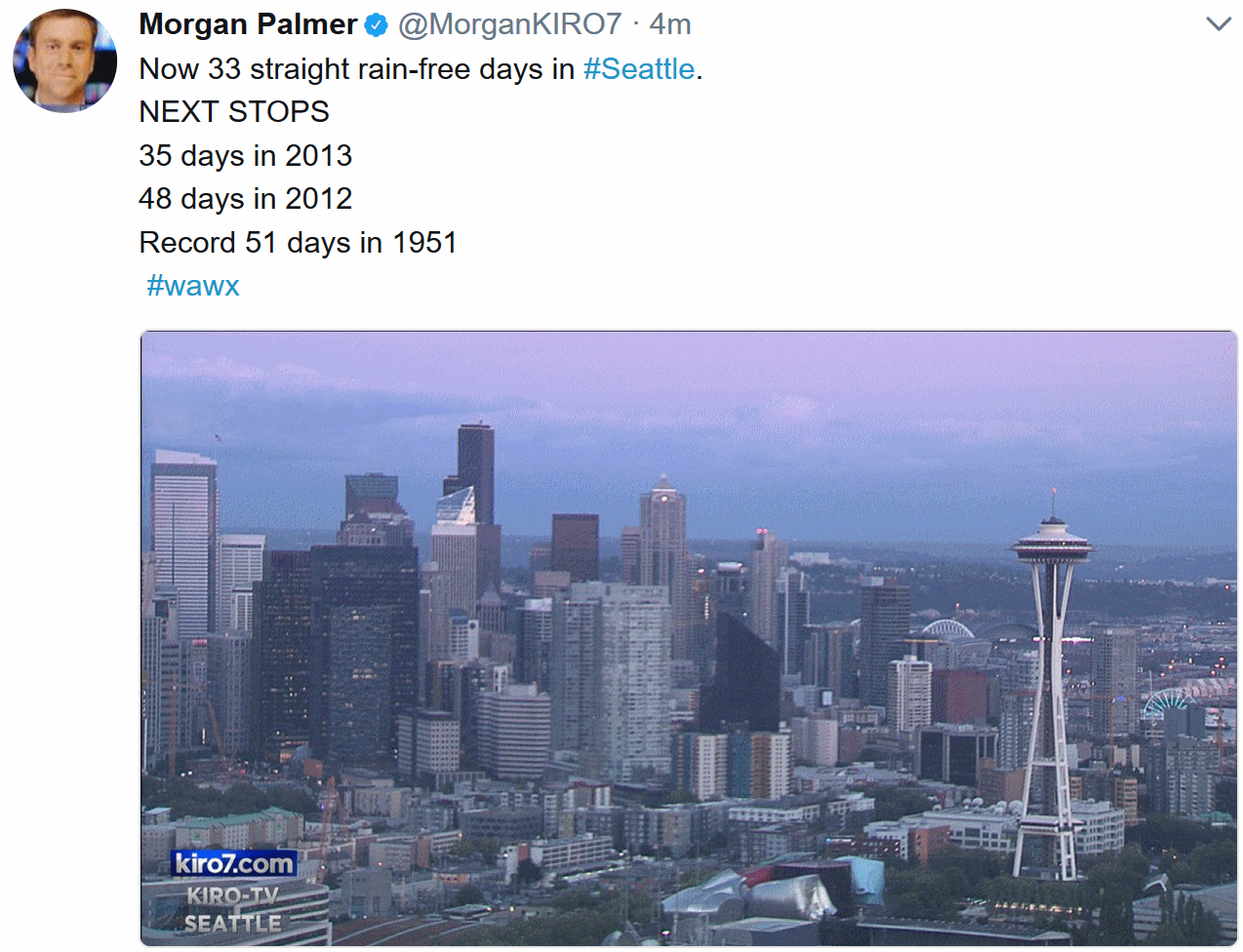
Sunday Heat Index.
Not a great weekend to visiting the nation's capital. Washington D.C.
was built on swampland neither Maryland nor Virginia wanted, and that
this weekend will be a blunt reminder that you don't want to spend much
time outside in D.C. during July or August. The heat index may push 110F
Saturday and Sunday afternoon from Baltimore and Wilmington into the
Carolinas - in the danger zone.
Early August:
Slight Relief Northern Tier of USA. Heat is forecast to be relentless
from California into the Rockies and Plains the next couple of weeks,
but a few puffs of Canadian air may take the edge off the worst of the
heat from Seattle and the Twin Cities to Buffalo and Boston.
WetBulb Globe Temperature: More Accurate Than Heat Index? A
NOAA link
explains the difference between Heat Index and Wet Bulb Temperature,
which seems to be a better measure of what the combination of heat and
humidity (and direct sunlight) really feels like: "
The WetBulb Globe
Temperature (WBGT) is a measure of heat stress in direct sunlight,
which takes into account: temperature, humidity, wind speed, sun angle
and cloud cover (solar radiation). This differs from the heat index,
which takes into consideration temperature and humidity and is
calculated for shady areas. If you work or exercise in direct sunlight,
this is a good element to monitor. Military agencies, OSHA and many
nations use the WBGT as a guide to managing workload in direct sunlight..."
Hit By Lightning: Tales from Survivors. Any desire you ever had to boat, golf or swim during a thunderstorm will be dashed after reading this story at
The New York Times; here's an excerpt: "...
Dr.
Mary Ann Cooper, a professor emerita at the University of Illinois at
Chicago, and an expert on lightning injuries, said lightning can cause a
wide range of damage, from tingling and numbness to cardiac arrest and
lasting brain injury. About two-thirds of people lose consciousness, she
said. Fewer than half suffer marks on their skin. And most are hurt by
electricity as the current travels through the ground. The Weather
Service estimates only 10 percent of those hit by lightning die. It's
not a club anyone wants to join, but survivors often crave one another's
company..."
File photo: Florida Tech.
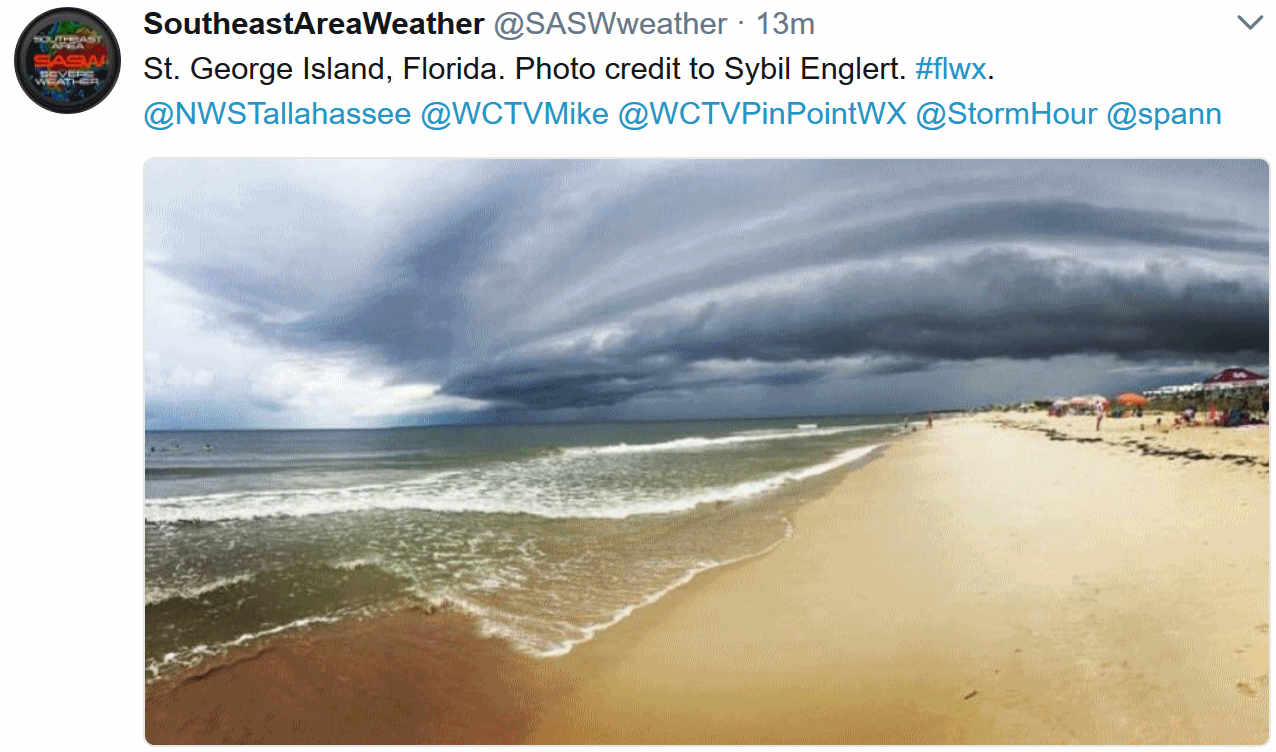
Very Close Call with a Flash Flood.
This guy is very, very lucky. This is the same Arizona flash flood that
claimed 9 lives last weekend, all from the same family, an
incomprehensible tragedy. Here's an excerpt from
WJBD.com, including video from ABC's Good Morning America: "
An
eyewitness who captured video of the powerful flash flood that killed
nine people this weekend in Arizona questioned during the ordeal whether
he would even survive to talk about it. "You make the wrong step and
you get sucked under. You just pray you make the right decision,"
Brandon West of Chandler, Arizona, told ABC Phoenix affiliate KNXV-TV.
West, 36, a friend and his dog named Lucky were headed to the area for a
swim in the hot weather, KNXV-TV reported, when they encountered the
rolling tide of black water, thick with debris. West not only survived
but managed to record what he saw on video..."
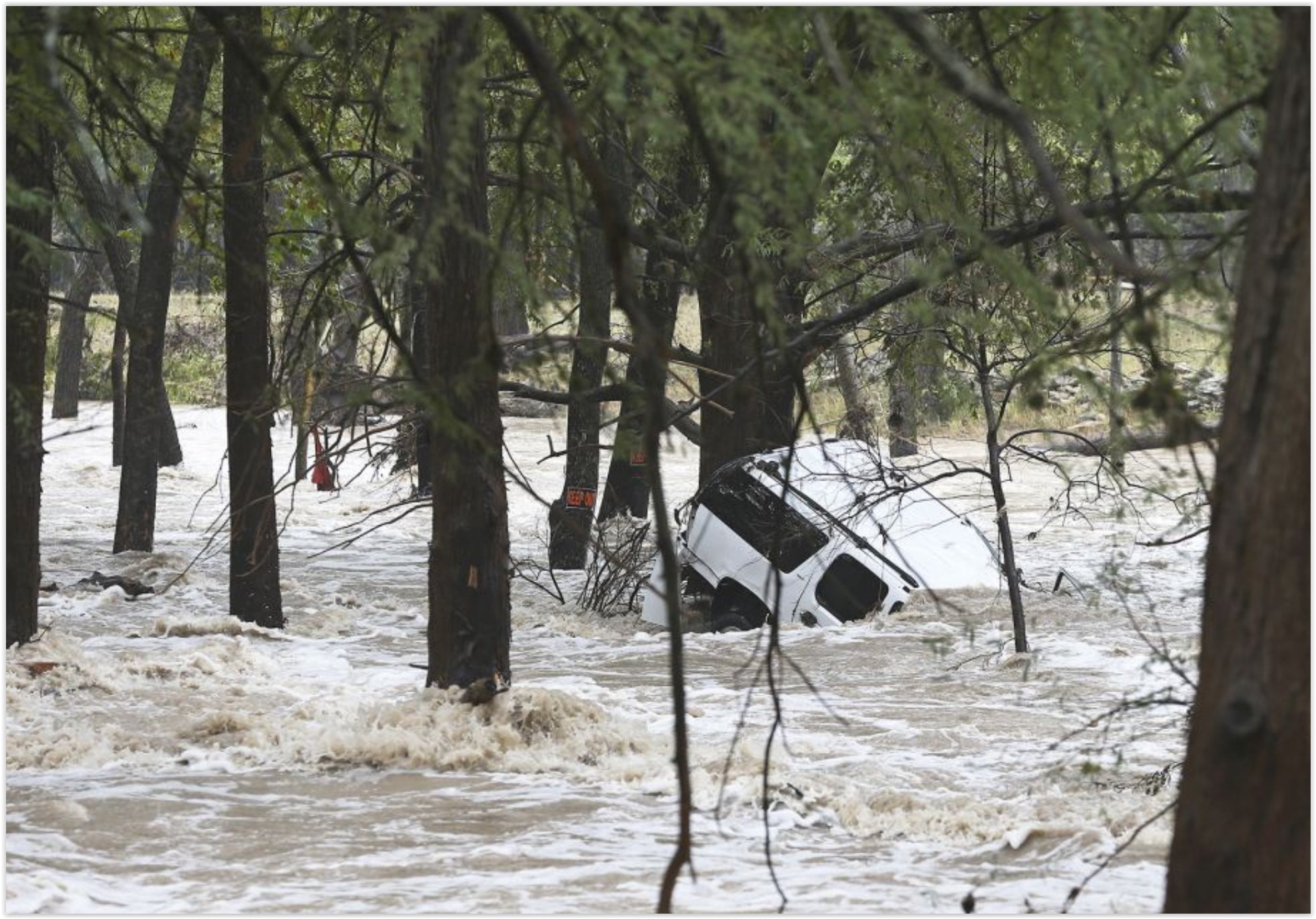 Deaths of 9 in Arizona Raise Questions About Flood Warnings
Deaths of 9 in Arizona Raise Questions About Flood Warnings.
Not to minimize this horrific event for the people involved, but
technology only goes so far. The warning system is good, but not
foolproof. If you're swimming in a creek, odds are you don't have your
cell phone on you, beeping, vibrating the latest warning. There's a
place for technology, paranoia and personal responsibility too. Here's
an excerpt from
US News: "...
The
storm dumped up to 1.5 inches (3.8 centimeters) of rain in an hour,
prompting a flash flood warning from the National Weather Service.
Though the service sent out a flash-flood warning over cellphone
networks, service in the remote area is patchy at best. Unless they had a
weather radio, the swimmers would have been unaware. Officials have
said people headed to wilderness areas should check weather alerts ahead
of time to determine whether it's safe. They note that it's hard to
predict where rain will fall in the desert Southwest, and people should
know that heavy downpours can cause flash flooding. That hasn't stopped
people from saying more should be done to protect the public from flash
floods. Steve Stevens, a volunteer firefighter with the nearby Water
Wheel Fire and Medical District, said there needs to be a way for
visitors to get flash flood alerts on their phones..."
File photo: Tom Reel, San Antonio Express-News.
At Midway Point: 2017 is Second Hottest Year on Record. Andrea Thompson reports at
Climate Central: "...
Personally,
I wasn't expecting it to be as warm as it has been,” Ahira
Sanchez-Lugo, a National Oceanic and Atmospheric Administration climate
scientist, said in an email. “After the decline of the strong El Niño I
was expecting the values to drop a bit and rank among the top five
warmest years. This year has been extremely remarkable.” The odds are
good that 2017 will stay in second place through the end of the year,
and it is even more likely that it will remain in at least the top three
hottest years. NOAA released its global temperature data
for June on Tuesday, and ranked June as the third warmest in its
records. The four-warmest Junes in its records have all happened in the
past four years..."
Graphic credit: NASA. "
How
monthly temperatures differ from the 1951-1980 average. So far, 2017
ranks behind only 2016 for the temperature for the first six months of
the year."
First Half of 2017: Fewer Weather-Related Losses Than 2016. Munich Re is tracking the trends. Here's an excerpt from
Intelligent Insurer: "...
Overall
losses came to $41 billion. The corresponding figure for the first six
months of 2016 was $111 billion; the average for the last ten years $102
billion. Insured losses totalled $19.5 billion (previous year: $32
billion; ten-year average $29 billion). The highest overall losses in
the first half-year were caused by the floods in Peru in February and
March with a figure of $3.1 billion, $380 million of which was insured.
The costliest event for insurers was a powerful thunderstorm in the US
in early May, with insured losses of $1.8 billion and overall losses of
$2.2 billion. The high number of severe thunderstorms in the USA is
presumed to have been at least partially influenced by a natural climate
phenomenon, according to Munich Re, especially in the first quarter of
2017: the tropical eastern Pacific off the northwest coast of South
America was exceptionally warm, a phenomenon that the Peruvian
authorities have dubbed “coastal El Niño”, despite the fact that it is
not a full-blown El Niño event..."
The World's Plastic Problem. According to a story at
Quartz the vast majority of all the plastic humans have ever made is still sitting somewhere on the planet: "
In total, according to a paper published today (July 19) in Science Advances,
humans have made 8.3 billion metric tons of new plastics since 1950.
And, thanks in large part to the global popularity of single-use plastic
packaging, half that total was made in just the last decade. The
problem is plastic doesn’t ever really disappear—at least not on any
timescale that would be relevant to humans. Recycling plastic helps
some, but it doesn’t make it go away, it just delays the date at which
it ultimately ends up in a landfill. So each year, the plastic we make
piles onto the plastic we made the year before, and the year before
that, and so on..."
Photo credit: "
Recycling only delays the day a plastic object ends up in a landfill."
(Reuters/China Daily)
In The Heart of Coal Country, State Officials Bet on Renewable Energy.
CNBC has the report: "...
When
Kiran Bhatraju, a native of Pikeville, Kentucky, and the CEO of
renewable-energy company Arcadia Power, heard that a coal company would
be converting an old strip mine into a solar farm, he expected huge
backlash. But his community's reaction was the opposite. "The mayor,
local politicians and people in coal country are ready and excited about
new jobs in the renewables industry," Bhatraju said. "The entire
community has been rallying behind the project because it will retrain
and put miners back to work..."
File photo:
Berkeley Energy Group.
Clean Energy Is Trouncing Oil, Gas and Coal in Trump Era. So says Bloomberg, which has metrics to back it up: "...As
clean-energy stocks climb, investors have pumped more money into wind
and solar. U.S. investments totaled $14.7 billion during April, May and
June, up 51 percent from the previous quarter to mark the highest level
since 2015, according to Bloomberg New Energy Finance. European
investments rose 10 percent, to $8.8 billion. “We are seeing catalysts
for these markets driven by the fact that people increasingly realize
clean energy is more profitable than conventional energy,” said David
Richardson, an executive director at Impax Asset Management, which
focuses on sustainability and has about $8.7 billion under management,
up 32 percent this year..."
Why the Grim Reaper of Retail Hasn't Come to Claim Best Buy. A story at The Los Angeles Times caught my eye; here's an excerpt: "...His
first move was to match any rival’s prices, especially those at Amazon,
so that in-store shoppers no longer needed to buy elsewhere. “We had no
choice, we had to take price off the table and match online prices,”
Joly said. That appeals to customers such as Scott Vellman of Los
Angeles, who bought the “Battlefield 1” video game for his Xbox One
player at Best Buy’s store in Atwater Village last week after Best Buy
matched its $50 price on Amazon. “I bought it here [instead of online]
because I didn’t want to wait for it to ship,” Vellman said. Best Buy
next sped up its delivery times, in part by expanding its national
distribution centers, and beefed up its website and phone app so that
customers could order online and pick up their products at the stores or
have them delivered..."
Netflix Takes on Hollywood. Will people still be going to movie theaters in 5 years? I hope so, but some days I'm not so sure. Here's an excerpt from
The Washington Post: "...
There
is a war in Hollywood right now and the war is the Netflix model versus
the Hollywood model," said Ross Gerber, president and chief executive
of Gerber Kawasaki, a wealth and investment management firm based in
Santa Monica. Over the past decade movie attendance has trended
downward, just as ticket prices have steadily increased, according to
data compiled by Box Office Mojo. And opening night for many movies
outside the blockbuster genre has lost some of its luster, analysts say.
"Nobody is going to the movies," Gerber said. "If it's not a tent-pole
movie, people don’t care anymore." Gerber envisions a new model where
Netflix customers are granted access to newly released movies, perhaps
for a onetime $40 fee, or as part of a monthly premium subscription..."
Robots Will Make The Best Fake News. Here's something to look forward to, courtesy of
Bloomberg View: "...
Human
beings can doctor images such as photographs, but it’s laborious and
difficult. And faking voices and video is beyond our capability. But
soon, thanks to machine learning, it will probably be possible to easily
and quickly create realistic forgeries of someone’s face and make it seem as if they are speaking in their own voice. Already, lip-synching
technology can literally put words in a person’s mouth. This is just
the tip of the iceberg -- soon, 12-year-olds in their bedrooms will be
able to create photorealistic, perfect-sounding fakes of politicians,
business leaders, relatives and friends saying anything imaginable. This
lends itself to some pretty obvious abuses. Political hoaxes --
so-called “fake news” -- will spread like wildfire. The hoaxes will be
discovered in short order -- no digital technology is so good that other
digital technology can’t detect the phony -- but not before it puts
poisonous ideas into the minds of people primed to believe them. Imagine
perfect-looking fake video of presidential candidates spouting racial
slurs, or admitting to criminal acts..."
Fortune 500.
Fortune is out with the latest list: Walmart at the top, Apple is #3: "
This
year’s Fortune 500 marks the 63rd running of the list. In total,
Fortune 500 companies represent two-thirds of the U.S. GDP with $12
trillion in revenues, $890 billion in profits, $19 trillion in market
value, and employ 28.2 million people worldwide..."
Interrupted Sleep May Lead to Alzheimer's, New Studies Show. The Washington Post has the details: "Getting
a solid night’s sleep is crucial not only for feeling good the next day
— there is increasing evidence that it may also protect against
dementia, according to new research presented Tuesday at the Alzheimer’s
Association International Conference in London. Three studies by
researchers at Wheaton College found significant connections between
breathing disorders that interrupt sleep and the accumulation of
biomarkers for Alzheimer’s disease. Treating the problems with dental
appliances or CPAP machines that force air into airways could help lower
the risk of dementia or slow its progress, the researchers said..."
File photo:
Finding Mastery.
This Rare Medical Condition Makes You Love Everyone. A story at
National Geographic made me do a double-take: "
A child that can’t stop hugging people, has no fear of strangers, and loves everyone equally—sounds beautiful, right? Not always. People with Williams syndrome,
a rare genetic condition, face problems every bit as challenging as
those with autism, from learning difficulties to trouble forming
friendships. As Jennifer Latson reveals in her moving book, The Boy Who Loved Too Much: A True Story Of Pathological Friendliness, it can also be immensely difficult for parents. The syndrome, whose sufferers have a surfeit of oxytocin, aka the love hormone, affects roughly 1 in 10,000 people worldwide, with 30,000 in the U.S..."
Photo credit: "Raising children with Williams syndrome can pose some unique challenges, such as setting boundaries with strangers." Photo by Joel Sartore, National Geographihc Creative.
Hip-Hop Is Bigger Than Rock Music, Thanks to Nobody Buying Albums. An interesting development, courtesy of Quartz: "...According to Nielsen Music’s latest semi-annual report,
hip-hop (including R&B) is now the biggest genre in the US,
overtaking rock music for the very first time. Hip-hop claims 25.1% of
all music consumption, while rock music is at 23%. Why this happened has
as much to do with US’s listening methods as it does the undeniable
talent of many modern-day rappers. In the 1990s, CD sales still
dominated. Digital-music streaming has now outstripped
physical album sales and iTunes downloads as the primary way people
listen to songs; with this new order comes both a new audience and a
revamp of music charts..."
The Abstract Beauty of One Of The World's Harshest Climates. Atlas Obscura has an eye-opening photo essay: "..
.In these regions—some of the most sparsely populated in the world—it’s essential to be prepared. Otherwise, says photographer Luca Tombolini,
“you just aren’t in the condition to photograph because you’re probably
thinking about how to save yourself.” Tombolini photographs deserts
with an eye for “plays of symmetries and purity.” His large format
images show pastel-hued dunes that form sweeping, abstract shapes, and
endless horizons under bleached blue skies..."
A 9-Year Old Tripped, Fell and Discovered a Million-Year-Old Fossil. The New York Times has an amazing story: "Jude
Sparks was only 9 years old when he made a remarkable paleontological
discovery. While out for a walk wiith his family in Las Cruces, N.M., in
November, Jude had been running to hide from his younger brothers when
he tripped and fell. He found himself face to face with something that,
he said, looked like "fossilized wood." "It was just an odd shape,"
Jude, now 10, said in a phone interview on Tuesday. "I just knew it was
not something that you usually find." It looked like a massive jaw, and
Jude's younger brother Hunter thought it belonged to a cow skull. His
parents, Michelle and Kyle Sparks, thought it resembled the remains of
an elephant. So they took a picture of the object to investigate
further..."
Photo credit: "Jude Sparks sitting beside the fossilized remains of a Stegomastodon." Peter Houde.

TODAY: Humid with strong to severe T-storms. Winds: SE 8-13. High: 84
FRIDAY NIGHT: Muggy with more T-storms. Low: 69
SATURDAY: Partly sunny, stray PM T-shower possible. Winds: NW 7-12. High: 86
SUNDAY: Mix of clouds and sun, cooler. Winds: NW 10-15. Wake-up: 66. High: 79
MONDAY: Pleasantly sunny and mild. Winds: SE 5-10. Wake-up: 58. High: 78
TUESDAY: Intervals of sun, a bit stickier. Winds: SE 7-12. Wake-up: 61. High: 82
WEDNESDAY: Unsettled, passing T-shower? Winds: NW 5-10. Wake-up: 66. High: 85
THURSDAY: Warm sun, storms should stay south. Winds: NW 3-8. Wake-up: 67. High: 83
Climate Stories...
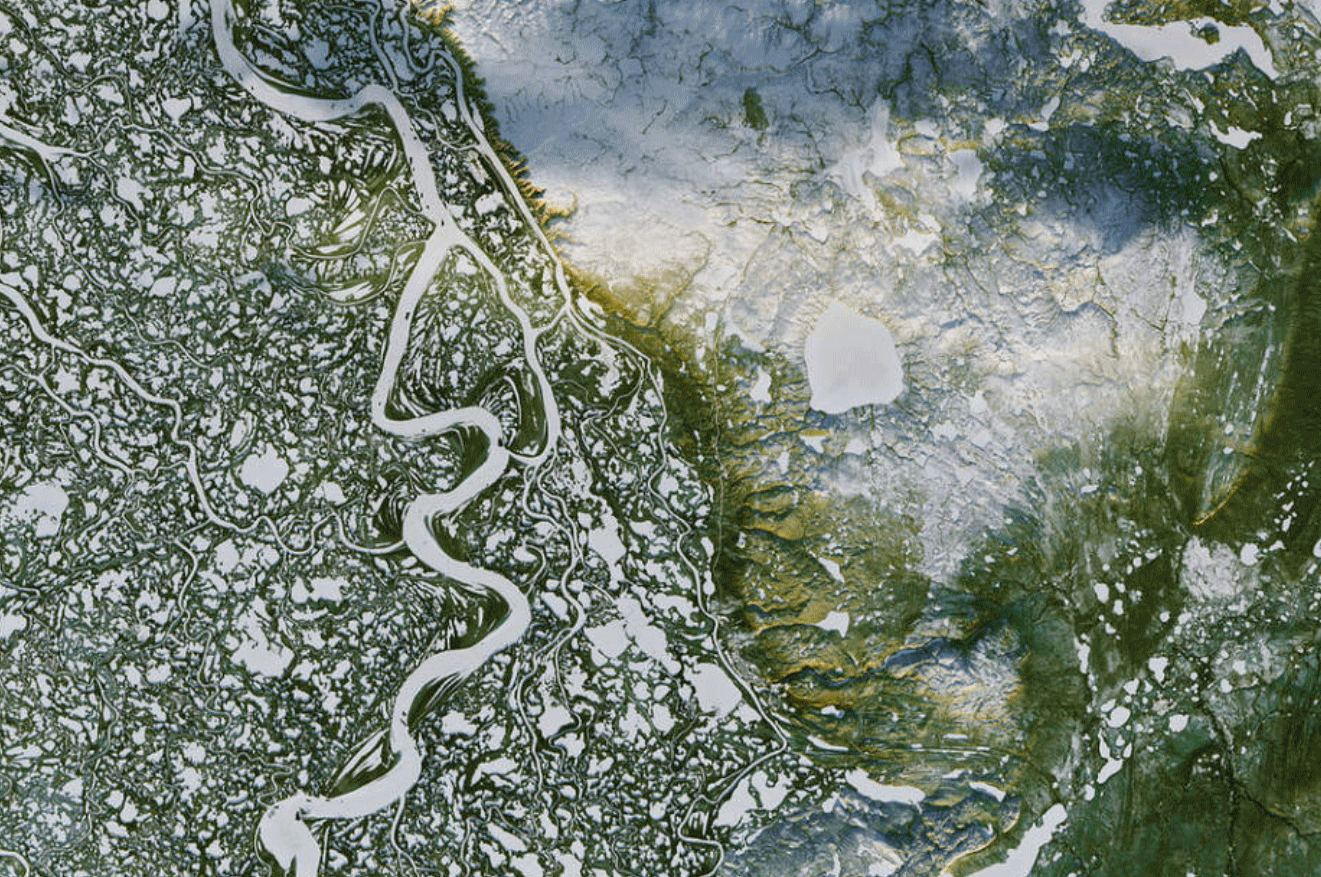 Methane Seeps Out as Arctic Permafrost Starts to Resemble Swiss Cheese.
Methane Seeps Out as Arctic Permafrost Starts to Resemble Swiss Cheese. Here's the intro to a story at
InsideClimate News: "
Global
warming may be unleashing new sources of heat-trapping methane from
layers of oil and gas that have been buried deep beneath Arctic
permafrost for millennia. As the Earth's frozen crust thaws, some of
that gas appears to be finding new paths to the surface through
permafrost that's starting to resemble Swiss cheese in some areas,
scientists said. In a study
released today, the scientists used aerial sampling of the atmosphere
to locate methane sources from permafrost along a 10,000
square-kilometer swath of the Mackenzie River Delta in northwestern
Canada, an area known to have oil and gas desposits. Deeply thawed
pockets of permafrost, the research suggests, are releasing 17 percent
of all the methane measured in the region, even though the emissions
hotspots only make up 1 percent of the surface area, the scientists
found..."
Image credit: "
In parts of northern
Canada's Mackenzie River Delta, seen here by satellite, scientists are
finding high levels of methane near deeply thawed pockets of permafrost." Credit: NASA Earth Observatory.
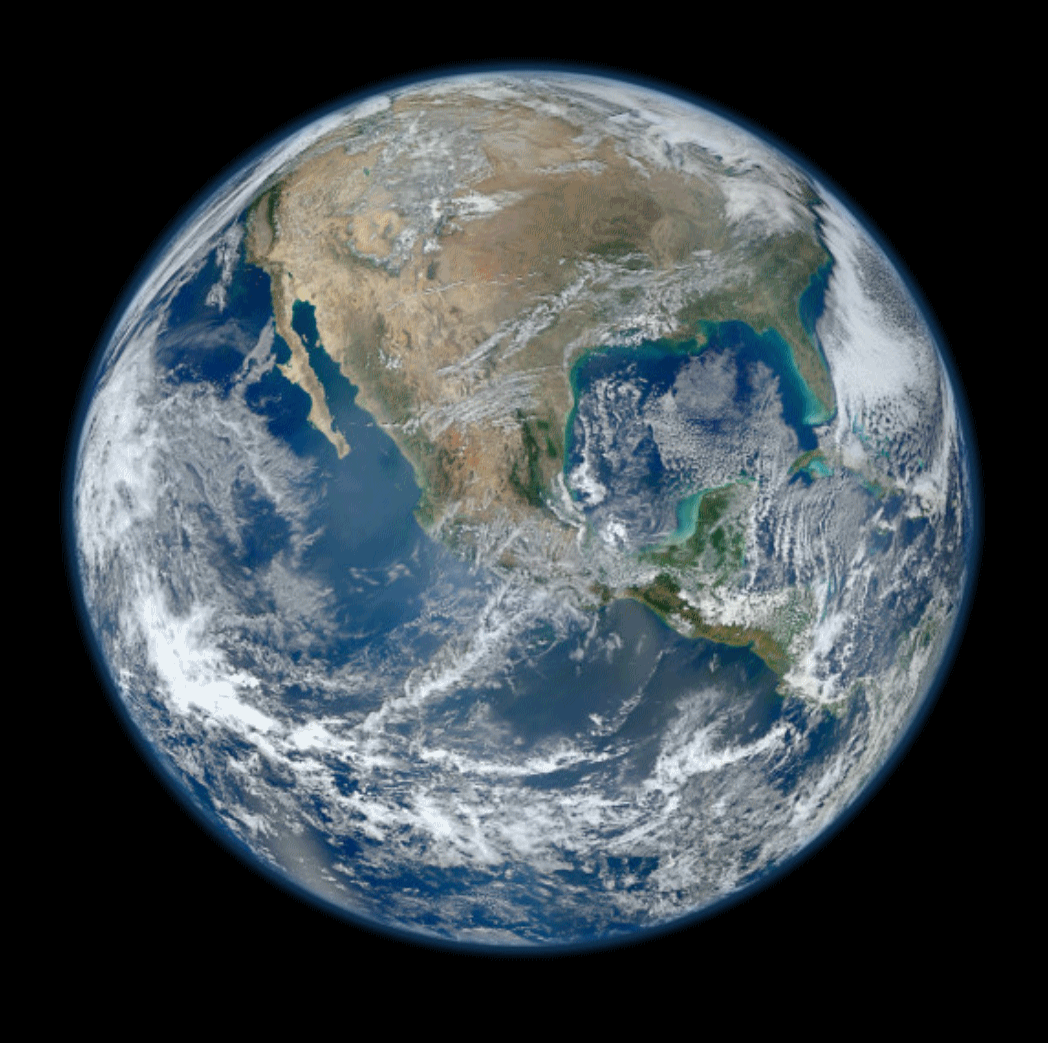 Robert Redford: "To Save the World, Start Small"
Robert Redford: "To Save the World, Start Small".
The solutions will be organic, bottom-up, not top-down, dictated more
by economics than politics. Here's an excerpt of an Op-Ed at
Time.com: "...
Our choice is no longer the economy vs. the environment. It is now the economy and the environment. Addressing climate change will help both. Ignoring it risks both. This is not a revelation in many of our cities and towns. There, the idea that climate change
is “political” is dissolving. If you are the mayor of a coastal town
that now floods regularly or a farming town that just experienced
several “once-in-a-hundred-years” droughts within a couple years,
politics is the furthest thing from your mind. This shouldn’t come as a
surprise. Mayors are usually our most direct connection to government.
They see the immediate ways in which our communities are threatened and
reinvented. Fighting climate change can be opportunity for such
reinvention..."
Image credit:
NASA/NOAA/GSFC/Suomi NPP/VIIRS/Norman Kuring.
2017 Is So Unexpectedly Warm It Is Freaking Out Climate Scientists. Joe Romm explains why at ThinkProgress: "Normally,
the hottest years on record occur when the underlying human-caused
global warming trend gets a temporary boost from an El Niño’s enhanced warming in the tropical Pacific. So it’s been a surprise to climate scientists that 2017 has been so remarkably warm — because the last El Niño ended a year ago. The National Oceanic and Atmospheric Administration (NOAA) reported
Tuesday that the first half of 2017 was the second-warmest January-June
on record for Earth, topped only by 2016, which was boosted by one of
the biggest El Niños on record..."
Graphic credit: "January–June 2017 global surface temperatures (compared to the 20th century average) in Degrees Celsius." CREDIT: NOAA.
Climate Change Will Force Today's Kids to Pay for Costly Carbon Removal Technologies, Study Says.
The Washington Post explains: "
The
longer humans continue to pour carbon dioxide into the atmosphere, the
closer we draw to leaving the next generation with an unmanageable
climate problem, scientists say. A new study,
just out Tuesday in the journal Earth System Dynamics, suggests that
merely reducing greenhouse gas emissions may no longer be enough — and
that special technology, aimed at removing carbon dioxide from the
atmosphere, may also be necessary to keep the Earth’s climate within
safe limits for future generations. The research was largely inspired by
a landmark climate change lawsuit brought by 21 children against the
federal government, which is scheduled to go to trial
in February 2018, and will be used as scientific support in the case.
In fact, its lead author, Columbia University climatologist and former
NASA scientist James Hansen, is a plaintiff on the case, along with his now 18-year-old granddaughter..."
Photo credit: "
New
research suggests that if immediate and significant emissions reduction
efforts are undertaken — amounting to a decline in global carbon output
by at least 3 percent annually starting in the next four years — then
less carbon extraction will be needed." (Martin Meissner/AP).
Scientist Spreads the Word on Climate Change, by Biking Across America. WTOP NewsRadio in Washington D.C. has the story: "...He
recently discussed the book with WTOP’s Shawn Anderson and Hillary
Howard, and highlighted some of the moments in which he witnessed the
dramatic impact of global warming. In Idaho and Montana, Goodrich rode
his bike (and 50 pounds of gear) into wildfire-affected areas. In
Kansas, he pedaled through 100-degree heat and punishing hot winds. And
across the front range of the Rockies, he saw particularly dramatic
evidence of its impact: massive amounts of dead trees caused by the
mountain pine beetle. The pest used to be killed off by extreme cold,
but “those kinds of winters don’t happen anymore, and the population of
this beetle has just exploded,” he said..."
Photo credit: "
Goodrich rides on the Hi-Line along U.S. 2 in northern Montana. Glacier National Park can be seen in the distance." (Courtesy David Goodrich).
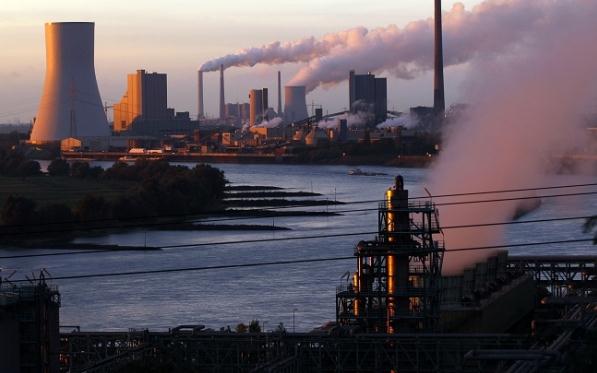
Regulators Deciding Whether to Raise "Social Cost of Carbon in Minnesota". We're
paying a price for reliance on fossil fuels, in short-term air
pollution health-related costs, and longer-term climate risk. Are all
the costs being factored into a "free market"? Here's an excerpt from
Star Tribune: "
The
costs of climate change — in other words, putting a price on greenhouse
gases — will be hashed out before Minnesota utility regulators over the
next week, and it’s guaranteed to be both complicated and contentious.
Minnesota was a pioneer in affixing a price to carbon dioxide back in
the 1990s and is still one of only a handful of states with such a
standard. Environmental and energy groups want the state’s carbon
pricing formula to be revised, adopting the federal government’s “social
cost of carbon.” “In the 20 years since the state specified the cost of
carbon dioxide, there has been a wealth of new information published on
the health and climate impacts of burning fossil fuel,” said J. Drake
Hamilton, science policy director for St. Paul-based Fresh Energy, a
renewable energy advocacy group..." (File image credit: Reuters).
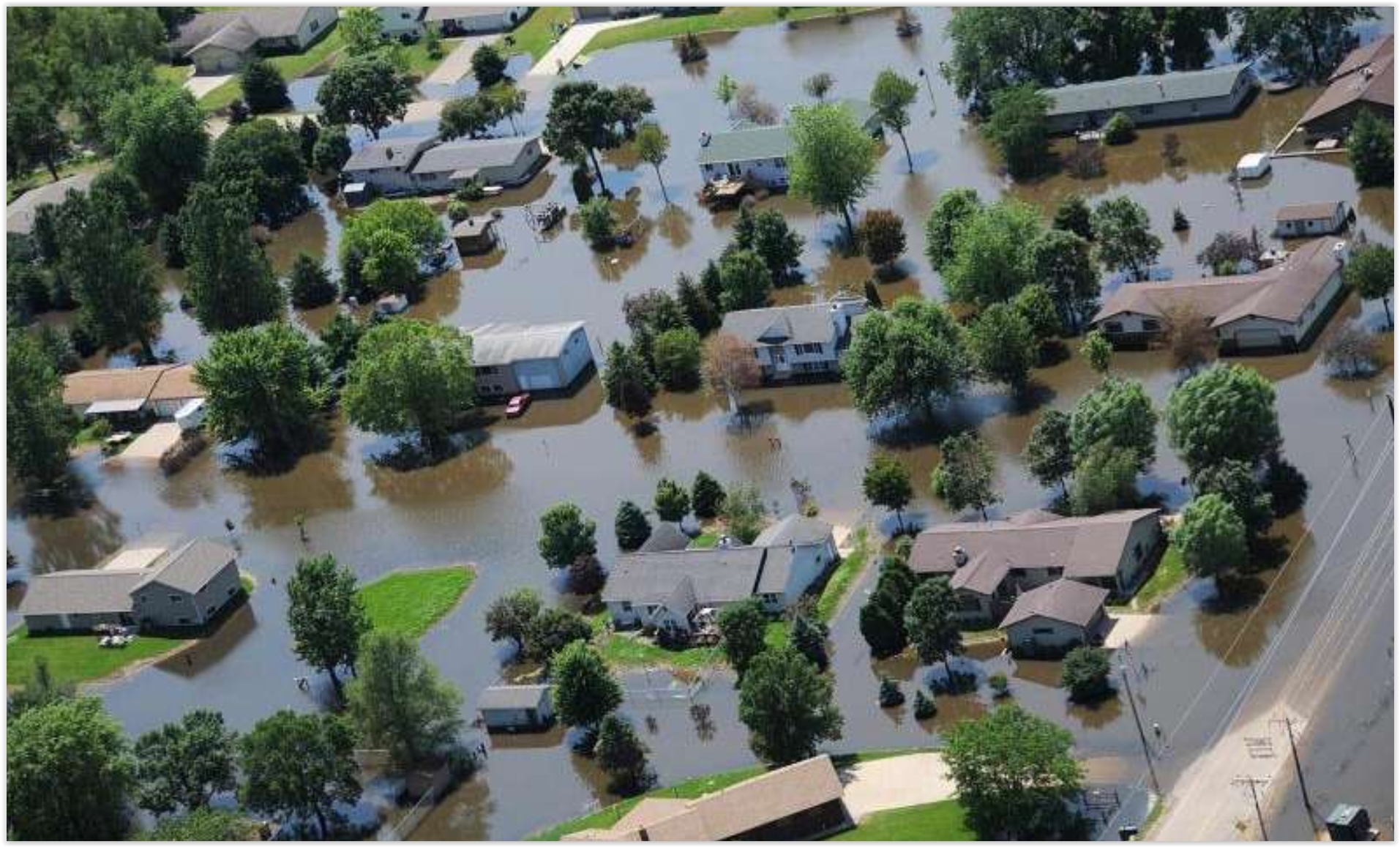 Climate Change Will Bring Coastal Flooding.
Climate Change Will Bring Coastal Flooding. Here's a snippet of an Op-Ed from the Editorial Board at
San Antonio's Express-News: "...
This
fits a broader prediction for America’s coasts from the Union of
Concerned Scientists. At present, about 90 communities across America
face such chronic flooding. But that will nearly double to 170
communities by 2035 under moderate projections for sea level rise. By
2060, it will jump to 270 coastal communities. And by 2100, nearly 500
coastal communities. A more extreme projection says 670 coastal
communities will face chronic flooding by the end of the century. These
projections can be useful for planning purposes. How close to the coast
should communities build hospitals, refineries, schools? What land can
communities set aside to ease flooding? What actions should be taken to
reduce carbon emissions and mitigate warming to limit the toll a warmer
world will take on future generations? Like other reports on climate
change, this coastal flooding report warns of an outsized impact on the
poor as well as the business and security concerns that come with a
warming world..."
File photo: Walt Jennings, FEMA.
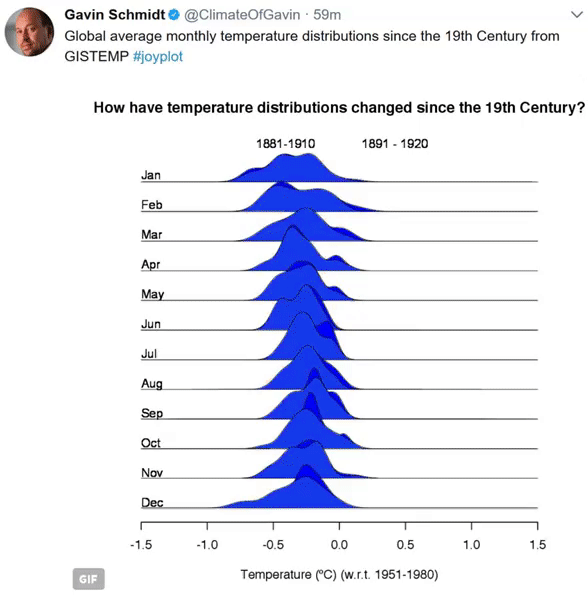
Threat of Lyme Disease Spreads North. Another unwelcome symptom of a warming climate. Here's an excerpt of an interview at
Yale Climate Connections: "...
The
problem is not just in Maine. Annual reported cases of Lyme disease in
the U.S. have more than doubled over the past 20 years. Foley says part
of the reason is that warmer winter temperatures have allowed the ticks
to thrive in new areas, so more cases are now reported in places like
upstate New York, and the upper Great Lakes region.
Foley: “The expansion north is certainly associated with climate change.”
And
it’s not just rising temperatures. Changes in precipitation, humidity,
and vegetation can also affect tick populations and the transmission of
Lyme disease..."
Global Warming Melts Ice, Alters Fabled Northwest Passage. Here's a clip from AP and
The Washington Post: "
More
than a century has passed since the first successful transit of the
treacherous, ice-bound Northwest Passage by Norwegian explorer Roald
Amundsen in 1906. Now The Associated Press is sending a text, video and
photo team through the passage, where global warming is melting sea ice
and glaciers at an historic rate, altering and opening up the Arctic in a
way unprecedented in recorded history. Although the passage presents an
attractive shortcut for maritime traffic between the Pacific and
Atlantic oceans, only a dozen or two vessels attempt to navigate the
poorly charted Canadian Arctic Archipelago during the brief summer
window each year. Many are sturdy coast guard icebreakers, adventure
cruises and thrill-seekers in small, nimble boats hoping to pick their
way through fields of floating ice that can easily strand unprepared
mariners..."
Photo credit: "
Polar
maritime lawyer Scott Joblin, from the Australian National University
in Cambria, looks over a map aboard the Finnish icebreaker MSV Nordica
as it sets sail in the North Pacific Ocean toward the Bering Strait,
Thursday, July 6, 2017. A group of international researchers is sailing
into the Arctic Sea aboard the Finnish icebreaker to traverse the
Northwest Passage and record the environmental and social changes that
are taking place in one of the most forbidding corners of the world." (David Goldman/Associated Press).
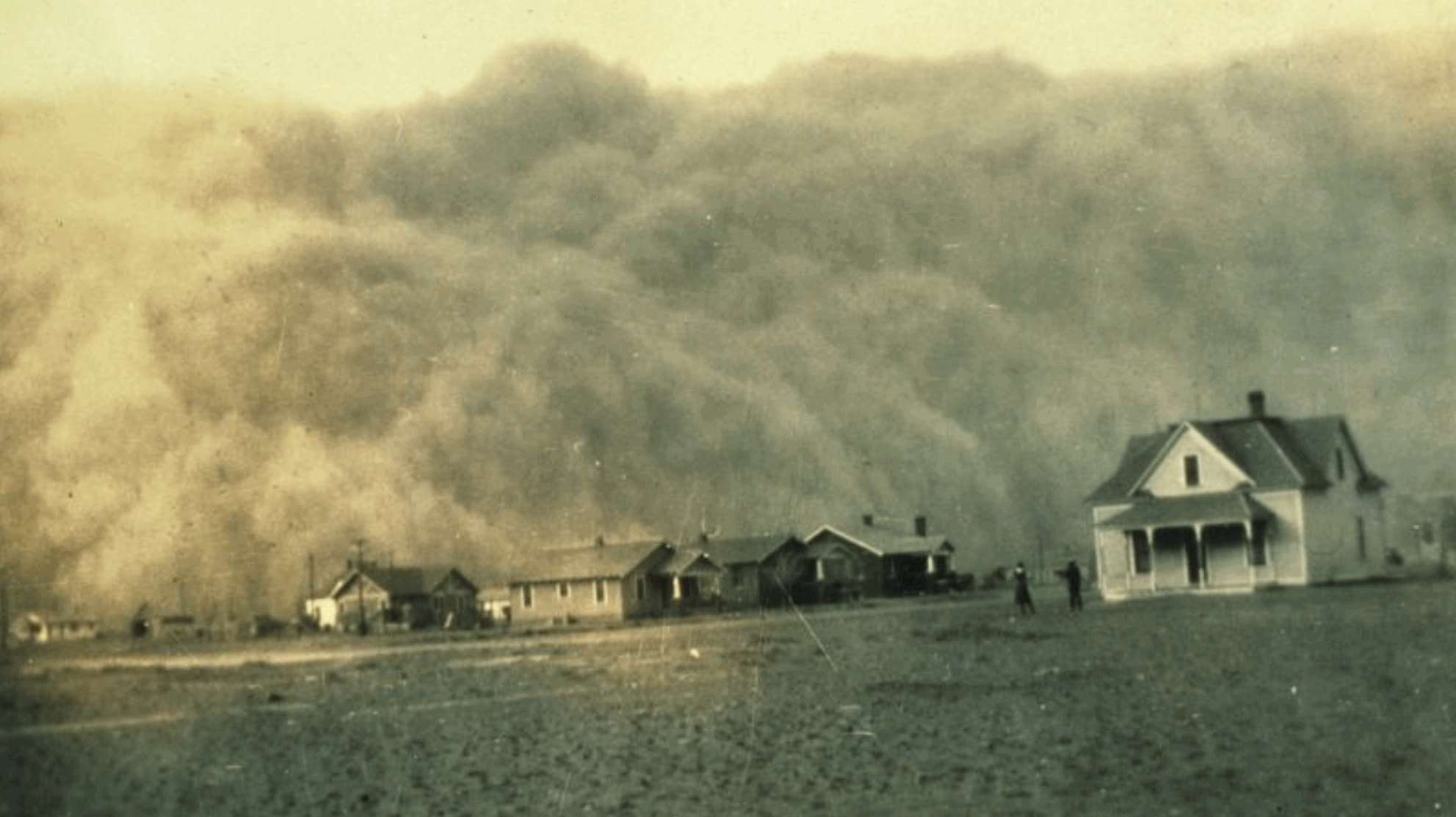 Scientists Warn Climate Change Could Bring the Dust Bowl Back Out of the History Books.
Of course land use techniques and farming practices have improved
dramatically since those dark, dusty days back in the 1930s. Could it
happen again? Gizmodo has details on a new study: "...In a study published on July 17 in the journal Scientific Reports,
researchers at Princeton University and the National Oceanic and
Atmospheric Administration’s Geophysical Fluid Dynamics Laboratory used
satellite data from 2003-2015 to resolve some of the lingering
uncertainty on prior dust activity models. Their research projects that
“climate change will increase dust activity in the southern Great Plains
from spring to fall in the late half of the twenty-first century –
largely due to reduced precipitation, enhanced land surface bareness,
and increased surface wind speed.” In other words, deforestation and the
mega-droughts which are increasingly becoming a feature of our changing climate are likely to create conditions ideal for the return of massive dust storms.
Scientists Warn Climate Change Could Bring the Dust Bowl Back Out of the History Books.
Of course land use techniques and farming practices have improved
dramatically since those dark, dusty days back in the 1930s. Could it
happen again? Gizmodo has details on a new study: "...In a study published on July 17 in the journal Scientific Reports,
researchers at Princeton University and the National Oceanic and
Atmospheric Administration’s Geophysical Fluid Dynamics Laboratory used
satellite data from 2003-2015 to resolve some of the lingering
uncertainty on prior dust activity models. Their research projects that
“climate change will increase dust activity in the southern Great Plains
from spring to fall in the late half of the twenty-first century –
largely due to reduced precipitation, enhanced land surface bareness,
and increased surface wind speed.” In other words, deforestation and the
mega-droughts which are increasingly becoming a feature of our changing climate are likely to create conditions ideal for the return of massive dust storms..."
File photo: "
A dust storm in April 1935 about to give Stratford, Texas a very bad day." Photo Courtesy
NOAA
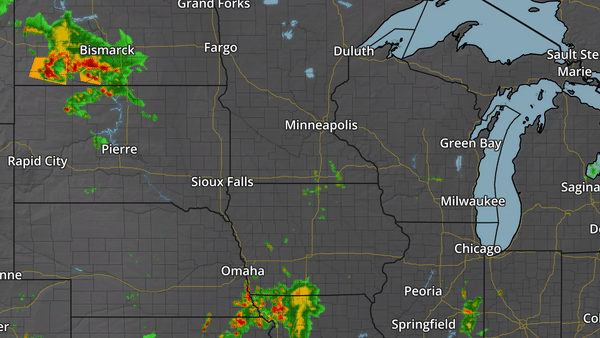
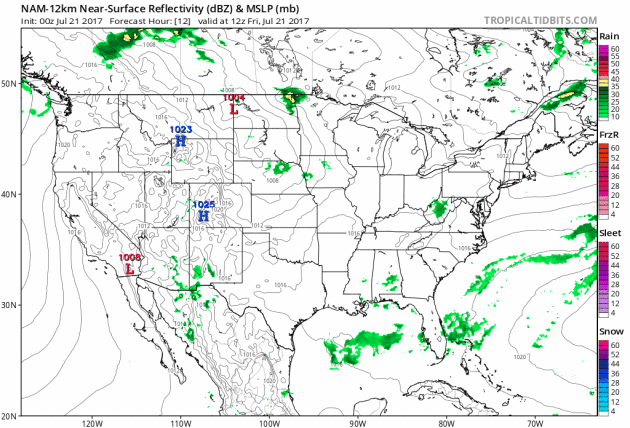
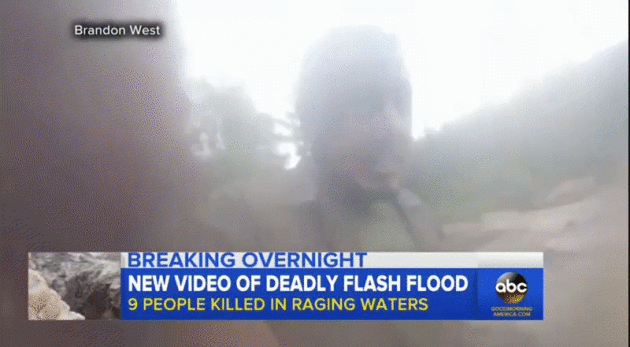
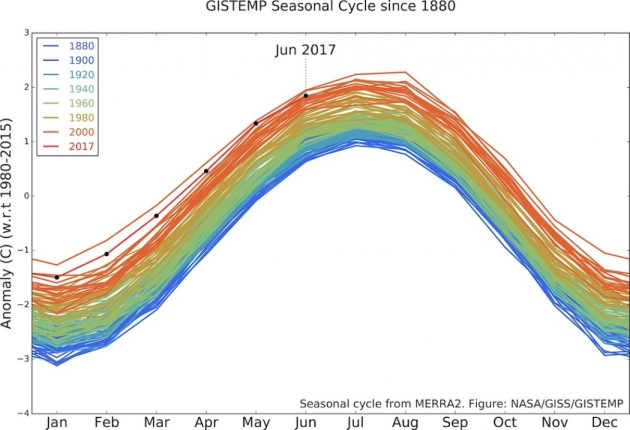



No comments:
Post a Comment